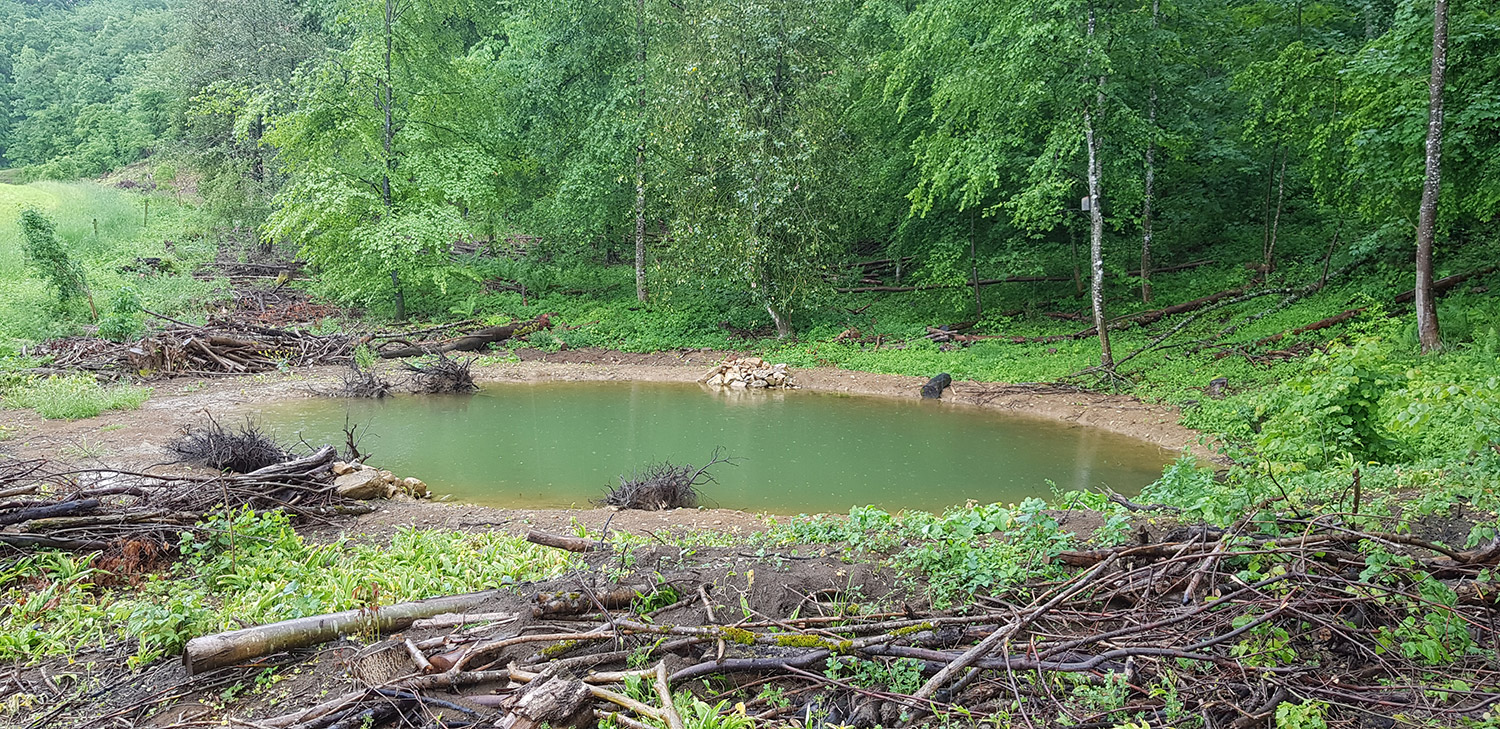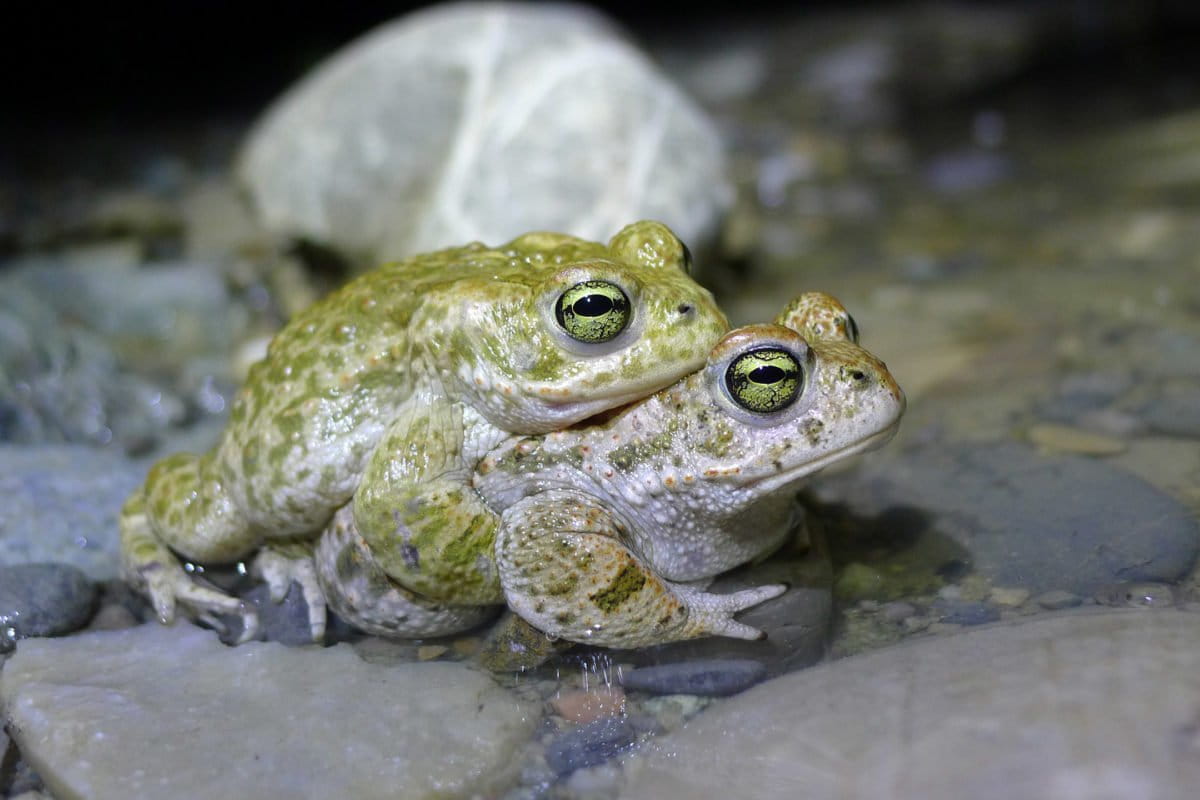- Local authorities and nonprofits created hundreds of new ponds on farms and in forests in a Swiss state.
- Two decades of monitoring 12 amphibian species showed that 10 of them expanded into more ponds, likely increasing their population numbers.
- The strategy is promising in similar settings, but may not be applicable everywhere.
In a rare triumph in amphibian conservation, researchers found that creating hundreds of new ponds in the midst of a bustling Switzerland landscape strengthened amphibian populations there. The effort, in which citizen scientists built and monitored ponds for 20 years, helped nearly three-quarters of the region’s populations of frogs, toads, newts and salamanders rebound or stabilize by occupying more ponds, a team reported recently in the Proceedings of the National Academy of Sciences
Nearly 40% of the world’s amphibian species are threatened with extinction, according to the IUCN Red List. The culprits vary from fungal diseases and climate change to pesticide use, road traffic, and habitat loss in local ecosystems. In Switzerland, for example, more than 90% of the wetlands favored by amphibians disappeared in the last century.
The question driving the project was simple, said first author Helen Moor, a quantitative ecologist at the Swiss Federal Institute for Forest, Snow and Landscape Research WSL in Birmensdorf: Without addressing other factors, could improving habitats alone help reverse the declining trends for amphibians?
In the Swiss countryside, at least, the answer for frogs, toads, newts and salamanders was yes. “In spite of all the other things going on in the landscape, just putting habitat there and making that available for the species, they made use of that and they started increasing,” Moor said. “To see that in the data at the landscape scale, that was very exciting.”

The data came from a large-scale pond-construction project in Switzerland’s state of Aargau, a densely populated region with pockets of managed forests and drained farmlands. A joint amphibian conservation and monitoring program started in 1999. The initial team of 27 fieldworkers ballooned to a citizen science workforce of more than 300 volunteers, led by study co-author Christoph Bühler of the environmental consulting company Hintermann & Weber in Reinach, on behalf of the local authorities responsible for the project.
Over two decades, the volunteers recorded the sights or sounds of amphibian species at 856 ponds, 422 of which were newly created during the study. Many of the new ponds were small, set within the nooks and crannies of the urbanized landscape.
Moor modeled thousands of data points to test encouraging reports from field workers that the new ponds were helping. She took into account individual observer biases and the personal training of all volunteers to extract reliable details of population trends in the region’s species.

The results were straightforward: 10 of the 12 amphibian species occupied more ponds in 2019 than in 1999. Many preferred new ponds, yet to be colonized by predators. Ponds close to forests and far from roads were best — especially for frog species and the smooth and great crested newts, which moved to new ponds more slowly than other amphibians.
Overall, the amphibian numbers climbed: 52% of regional populations of the eight species listed as threatened increased, and 32% remained stable, based on the number of ponds where the team spotted amphibians.
The key to this study was the massive dataset, gathered with the dedication characteristic of the Swiss work ethic, said Corey Bradshaw, an ecologist at Flinders University in Adelaide, Australia, who was not involved with the study.
Bradshaw was not surprised that amphibians in a region with plenty of water would benefit from more breeding habitats. “Arid zones, where frogs are just sort of holding on at the best of times … are where the most spectacular failure of frog restorations happened,” Bradshaw said. Creating new ponds with minimal maintenance would not translate well to very dry or water-logged areas, he noted, a limitation also pointed out by the authors.

Moor said her part of the effort — the quantitative analysis — was rewarding because she got to inform the hundreds of volunteers listening to frog calls that building new habitats can help — at least a little.
“It’s a very simple story: Do something positive for species and you can’t really fail,” Moor said. “It will have some positive effect on some species.”
Citation:
Moor, H., Bergamini, A., Vorburger, C., Holderegger, R., Bühler, C., Egger, S., Schmidt, B. (2022). Bending the curve: Simple but massive conservation action leads to landscape-scale recovery of amphibians. PNAS, 119 (42). doi.org/10.1073/pnas.2123070119
Elissa Welle (@ElissaWelle) is a graduate student in the Science Communication program at the University of California, Santa Cruz. Other Mongabay stories produced by UCSC students can be found here.
